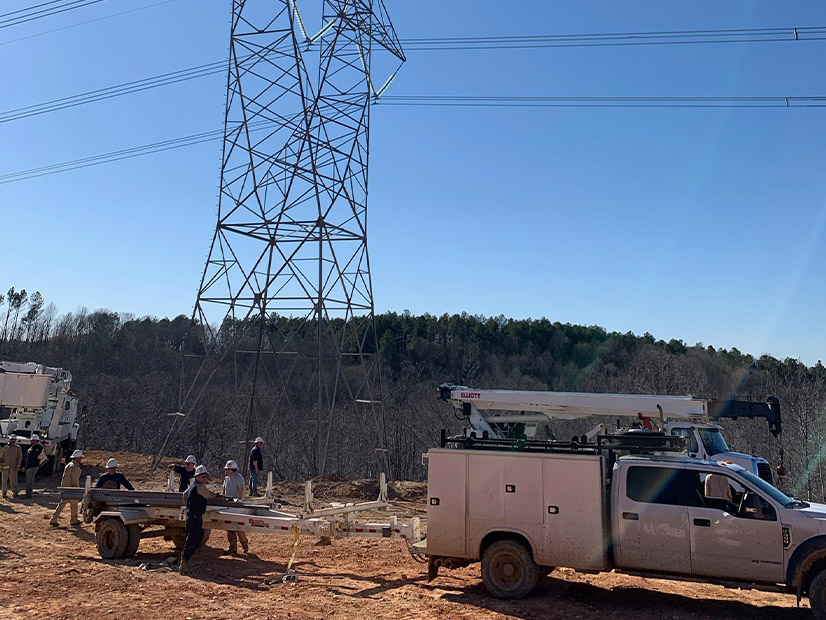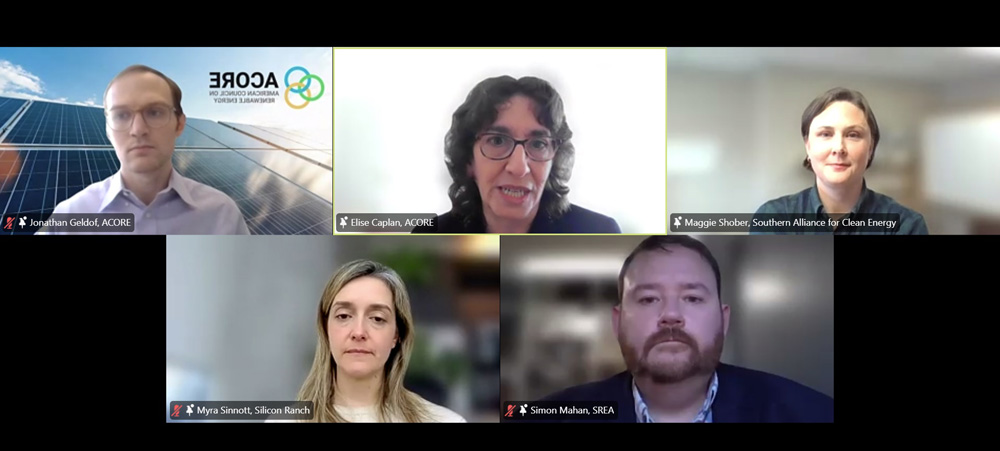The American Council on Renewable Energy (ACORE) says Congress could take steps to establish more comprehensive transmission and generation planning within the Tennessee Valley Authority.
ACORE published a new report ahead of a Jan. 30 webinar, suggesting Congress ensure the TVA board of directors has access to outside expertise; order TVA to engage in comprehensive transmission planning; bring the utility under FERC jurisdiction; require more transparency; and investigate how best it could plan resources, transmission and interconnection.
ACORE said projections of increasing load in the Tennessee Valley and TVA relying on imports to manage peak load mean it is time for Congress to consider modernizing the utility’s management.
Jonathan Geldof, lead author of the report and senior manager of government affairs for ACORE’s Macro Grid Initiative, said that with TVA’s draft integrated resource plan laying out 30 possible portfolios, its board members — who are not required to have experience in the electric industry — seem ill equipped to determine the most realistic path. Geldof said Congress should ensure the board can access independent staff, like at a state public service commission, or use an Independent Market Monitor, akin to those in RTOs, to get advice.
The webinar occurred a day before TVA CEO Jeff Lyash announced his retirement after about six years with the federal utility. (See related story, TVA CEO Jeff Lyash Announces Plans to Retire.)
TVA is conducting integrated resource planning through 2035. The draft IRP estimates it will need 9 to 26 GW in new firm capacity, resulting in a 75 to 90% reduction in carbon emissions from a 2005 peak.
In its report, ACORE said the draft IRP is so broad it could “serve to justify whatever action TVA chooses to take.” It also said the utility’s board is “woefully ill equipped to provide the kind of feedback [that] would serve as a check on TVA.
“ACORE noted that with TVA set to reach its borrowing limit in the coming years, it’s an opportune time for Congress to condition funding increases on administrative improvements.
Geldof said the valley is poised for data centers, including an expansion of Colossus, a supercomputer built by Elon Musk’s artificial intelligence startup, xAI. On the other hand, he said, TVA faces 7 GW of retirements over the next few years.
“What all those scenarios have in common is that TVA is going to need a lot more generation in the coming years,” Geldof said.
TVA recently set an all-time peak demand record of 35.3 GW on Jan. 22 during a cold snap in which systemwide temperatures averaged 11 degrees Fahrenheit. However, ACORE said TVA was able to meet demand only through 20% imported power.
Integrated Transmission Planning
Additionally, TVA is undergoing an integrated transmission plan for the first time in its history. But Geldof said any ensuing transmission portfolio will not be as valuable as it could be unless it is planned in concert with the IRP. TVA is tackling the two under independent processes.
“When you consider generation and transmission separately, that’s not really an integrated plan,” he said.
Geldof said that like much of the Southeast, TVA also needs interregional transmission. He pointed out that while TVA was initiating rolling blackouts during the December 2022 winter storm, neighbor SPP was curtailing excess wind generation in its footprint.
Congress also should order a relaxation of TVA’s “fence,” Geldof said, which suppresses competition. He was referring to a 1959 addition to the TVA Act that prohibits the utility from selling its electricity into wholesale markets outside of its territory and prohibits its local power companies from buying power from its neighbors.
“They could open a ‘gate,’ to expand the metaphor … or they could take down the fence altogether,” Geldof said of Congress, though he added that large utilities in the valley likely would resist removal of the wheeling restriction.
Southern Renewable Energy Association (SREA) Executive Director Simon Mahan said the group applied to be a stakeholder in TVA’s integrated transmission process but was denied and shut out of meetings.
From what he can tell, Mahan said, TVA’s transmission planning is “radically different” than that of nearby MISO, where planners hold consistent public meetings, are available for discussion and do not gatekeep planning information. He said SREA is concerned TVA just now is “stepping into” long-term, scenario-based transmission planning but seemingly refuses help from those that have contributed to comprehensive planning in RTO footprints.
“It’s a missed opportunity from public power to take feedback from some of the areas that have best practices and really kind of shut down those discussions before they get started,” Mahan said.
Mahan also said the TVA board receives limited information and currently does not get the “gut check” that analysis from independent third parties provides.
“It’s not that we’re criticizing the board for making bad decisions. It’s just that they are not given enough information to know, ‘Is this truly the best decision at the right time?’” he said.
Maggie Shober, research director at the Southern Alliance for Clean Energy, said TVA should settle on the most probable path forward in an IRP instead of simply using its lowest-end and highest-end estimates, which have it installing anywhere between a few hundred megawatts and several gigawatts of solar capacity.
“TVA’s past IRPs have been overly broad.” The public should reach out to the TVA and its board to urge more specific resource planning, she said. Many in TVA’s leadership come from C-suites in investor-owned utilities that are accustomed to meeting load growth with natural gas plants. Shober said it’s incumbent on her organization and others to “break them out of that.”
Myra Sinnott, of solar developer Silicon Ranch, said more transparent oversight would make building generation in TVA easier.
Sinnott said trying to develop in TVA is a “chaotic” process, with requirements continually changing with no clear indication.
“It’s like Whac-A-Mole sometimes. … You feel a little hamstrung working in a black hole,” Sinnott said. “It tends to be a more complicated process working in TVA than in other regions. … It would be easier if things were a little more consistent.”
Finally, panelists agreed the Trump administration’s efforts to bolster fossil fuels would not grind the clean energy transition to a halt or render renewable generation an unsafe bet.
Mahan said TVA’s resource needs are coming fast through a combination of load growth and aging generation. He said scuttling renewable energy plans in favor of fossil fuel generation does not make economic sense and would strain the supply chain for natural gas components.
“If we’re going to be building big stuff again on the load side, we have to have as many tools in our toolbox as possible,” he said.
“I feel like the cow is already out of the barn,” Sinnott said. “It’s going to take a lot more than four years to slow it way down.”
Shober said she thinks TVA has an overreliance on gas already given its current generation portfolio. She argued TVA’s increasing reliance on gas will not help it become more reliable and could introduce volatility into rates through oscillating fuel prices.




